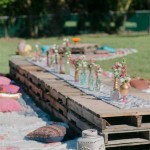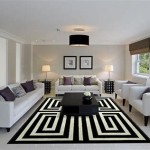Home Decor Flooring Ideas: A Comprehensive Guide
Flooring is a fundamental aspect of home decor, impacting both the aesthetic appeal and functionality of any living space. The selection of appropriate flooring materials requires careful consideration of various factors, including budget, lifestyle, desired aesthetic, and the specific requirements of each room. This article provides a detailed overview of various flooring options, highlighting their characteristics, benefits, and drawbacks, to assist homeowners in making informed decisions.
The available range of flooring materials is extensive, encompassing natural materials like hardwood and stone, engineered options such as laminate and vinyl, and specialized choices like carpet and tile. Each material possesses unique properties that make it suitable for different applications. Understanding these properties is crucial for selecting the flooring that best aligns with the homeowner's needs and preferences.
Beyond the practical considerations of durability and maintenance, flooring plays a significant role in establishing the overall design and ambiance of a home. The color, texture, and pattern of the flooring can dramatically influence the perceived size and character of a room, contributing to a cohesive and visually appealing interior space. Therefore, careful planning and consideration of the design implications are essential when choosing flooring.
Hardwood Flooring: Timeless Elegance and Enduring Value
Hardwood flooring remains a classic and highly sought-after option, prized for its natural beauty, durability, and ability to increase the value of a home. Available in a wide variety of wood species, each with its unique grain patterns and color variations, hardwood provides a versatile design element that can complement a range of architectural styles.
The benefits of hardwood flooring extend beyond aesthetics. Hardwood is a durable material that, with proper maintenance, can last for decades. It is also a relatively low-maintenance option, requiring regular sweeping and occasional cleaning with a hardwood-specific cleaner. Furthermore, hardwood is a natural material that can contribute to a healthier indoor environment, as it does not harbor allergens as readily as carpet.
However, hardwood flooring also has some drawbacks. It is typically more expensive than other flooring options, both in terms of material costs and installation. It is also susceptible to scratches and dents, particularly in high-traffic areas or homes with pets. Additionally, hardwood is not ideal for areas with high moisture levels, such as bathrooms or basements, as it can warp or rot.
When selecting hardwood flooring, homeowners should consider the hardness of the wood species, which is measured using the Janka hardness scale. Harder woods, such as Brazilian cherry or hickory, are more resistant to dents and scratches than softer woods like pine or fir. The finish of the hardwood is also an important consideration, as it affects the appearance and durability of the floor. Common finishes include polyurethane, which provides a durable and water-resistant surface, and oil-based finishes, which offer a more natural look and feel.
Engineered hardwood is an alternative that addresses some of the limitations of solid hardwood. It consists of a thin layer of hardwood veneer bonded to a core of plywood or fiberboard. This construction makes engineered hardwood more dimensionally stable than solid hardwood, meaning it is less likely to warp or expand and contract in response to changes in humidity. Engineered hardwood is also typically less expensive than solid hardwood.
Tile Flooring: Durability, Versatility, and Design Flexibility
Tile flooring is a popular choice for bathrooms, kitchens, and entryways due to its durability, water resistance, and design versatility. Available in a wide range of materials, including ceramic, porcelain, and stone, tile offers a variety of aesthetic options to suit different design styles.
Ceramic tile is a cost-effective and versatile option that is suitable for a variety of applications. It is relatively easy to install and maintain, and it is available in a wide range of colors, sizes, and patterns. Porcelain tile is a denser and more durable option than ceramic tile, making it suitable for high-traffic areas and outdoor applications. It is also more resistant to water and stains than ceramic tile.
Stone tile, such as granite, marble, and slate, offers a natural and luxurious look. Stone tile is durable and long-lasting, but it can be more expensive than ceramic or porcelain tile. It also requires more maintenance, as it is porous and can stain if not properly sealed. Grout, the material used to fill the spaces between tiles, is also an important consideration. Selecting a grout color that complements the tile is crucial for achieving a cohesive look. Epoxy grout is a more durable and stain-resistant option than cement grout.
The color and size of the tiles can significantly impact the perceived size and feel of a room. Larger tiles can make a small room appear larger, while smaller tiles can add visual interest and texture. Lighter-colored tiles can brighten a room, while darker-colored tiles can create a more intimate and cozy atmosphere. The layout of the tiles can also affect the overall aesthetic. Common layouts include straight lay, staggered lay, and diagonal lay, each offering a different visual effect.
Heated tile flooring is an increasingly popular option, providing added comfort and warmth, particularly in colder climates. Electric radiant heating systems can be installed beneath the tile, providing even and consistent heat throughout the floor. This can be a particularly appealing option for bathrooms, where the cold surface of tile can be uncomfortable.
Laminate and Vinyl Flooring: Affordable and Practical Alternatives
Laminate and vinyl flooring are popular choices for homeowners seeking affordable and practical alternatives to hardwood and tile. These materials offer a range of benefits, including cost-effectiveness, durability, and ease of installation.
Laminate flooring consists of a multi-layer construction, with a core of high-density fiberboard (HDF) or medium-density fiberboard (MDF) topped with a photographic image layer and a protective wear layer. This construction allows laminate flooring to mimic the look of natural materials like hardwood and stone at a fraction of the cost. Laminate flooring is also relatively easy to install, often using a click-lock system that requires no glue or nails.
Vinyl flooring is a synthetic material made from polyvinyl chloride (PVC). It is available in a variety of forms, including sheet vinyl, vinyl tiles, and luxury vinyl planks (LVP). Vinyl flooring is highly water-resistant, making it an ideal choice for bathrooms, kitchens, and basements. It is also durable and easy to clean, requiring only regular sweeping and mopping.
Luxury vinyl planks (LVP) and luxury vinyl tiles (LVT) are increasingly popular options that offer a more realistic look and feel than traditional vinyl flooring. These products are typically thicker and more durable than sheet vinyl, and they often feature embossed textures that mimic the grain of wood or the texture of stone. LVP and LVT are also available in a wide range of colors and styles, allowing homeowners to achieve a variety of design looks.
When selecting laminate or vinyl flooring, it is important to consider the thickness of the wear layer. The wear layer is the top layer of the flooring that protects it from scratches and stains. A thicker wear layer will provide greater durability and longevity. It is also important to choose a product that is rated for the intended use. For example, flooring that is intended for high-traffic areas should have a higher wear rating than flooring that is intended for low-traffic areas.
While laminate and vinyl flooring offer many benefits, they also have some drawbacks. They are not as durable as hardwood or tile, and they can be susceptible to scratches and dents. They also do not add as much value to a home as natural materials like hardwood or stone. However, for homeowners on a budget or those seeking a practical and low-maintenance flooring option, laminate and vinyl flooring can be an excellent choice.
Carpet Flooring: Comfort, Warmth, and Sound Absorption
Carpet flooring provides comfort, warmth, and sound absorption, making it a popular choice for bedrooms, living rooms, and other areas where a soft and cozy feel is desired. Available in a wide range of styles, colors, and textures, carpet offers a versatile design element that can complement a variety of decor styles. The choice of carpet fiber, construction, and padding significantly impacts its performance and longevity.
Nylon is a synthetic fiber known for its durability, stain resistance, and resilience. It is a popular choice for high-traffic areas and homes with pets. Polyester is another synthetic fiber that is more affordable than nylon. It is soft and comfortable underfoot, but it is not as durable or stain-resistant as nylon. Olefin is a synthetic fiber that is known for its resistance to moisture and mildew, making it a good choice for basements and other areas where moisture is a concern.
Wool is a natural fiber that is known for its durability, stain resistance, and luxurious feel. It is also naturally flame-resistant. However, wool carpet is more expensive than synthetic carpet. Cut-pile carpet has fibers that are cut at the ends, creating a smooth and even surface. Loop-pile carpet has fibers that are looped, creating a textured surface. Cut-and-loop carpet combines cut and looped fibers to create a patterned surface.
The density of the carpet fibers is an important indicator of its durability and performance. A denser carpet will generally be more durable and resistant to crushing and matting. The padding beneath the carpet provides cushioning, support, and sound absorption. A thicker and denser padding will provide greater comfort and support.
Carpet requires regular cleaning and maintenance to prevent the buildup of dirt, dust, and allergens. Regular vacuuming is essential, and professional carpet cleaning is recommended at least once a year. Some carpets are treated with stain-resistant finishes, which can help to prevent stains from setting in. However, it is still important to clean up spills promptly to prevent permanent staining. While carpet offers advantages in comfort and warmth, it is not ideal for areas prone to moisture or spills, such as bathrooms and kitchens.

Home Decor Ideas Trends For 2025 Flooring

Modern Flooring Ideas 11 Options For Contemporary Homes Inc

Best Flooring Ideas For Your Living Room America

34 Noteworthy Wood Flooring Ideas For Living Rooms

2025 Flooring Trends 20 Top Ideas This Year

Types Of Flooring For Your Home Beautiful Homes

15 Awesome Floor And Deco Ideas Installation Sigmadoors

Hardwood Floor Designs Ideas Trends

One Living Room Seven Ways Hardwood Flooring Ideas

Home Decor Ideas Trends For 2025 Flooring
Related Posts







